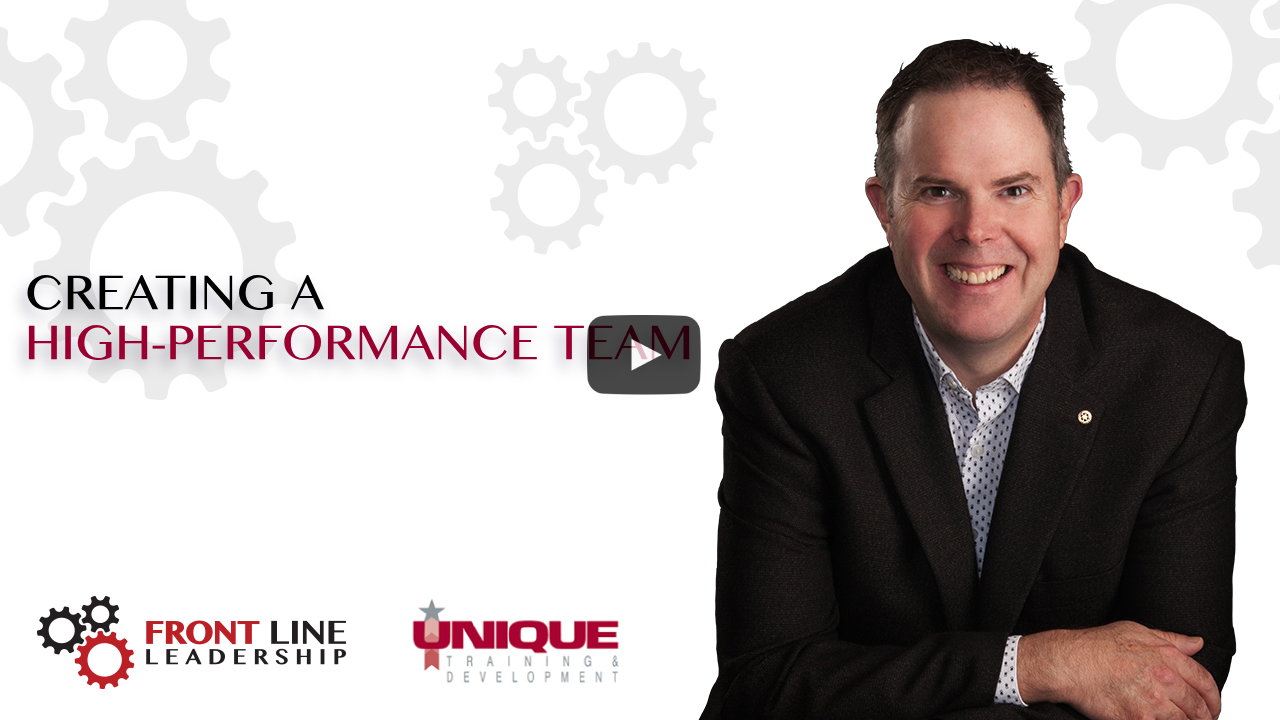Creating a High-Performance Team
Hi ~Contact.FirstName~,
A fragmented team rarely creates results.
So, how exactly can you create a strong sense of teamwork and collaboration in your team?
In one of our workshops, we have people take two minutes to brainstorm all the items they can think of that have a certain attribute or characteristic. We find that people will list, in two minutes, anywhere from eight items up to as many as 25 to 30 items, but nobody ever exceeds 30 items.
And yet, when you get the team of people to share their unique items, you find out that the team as a whole actually comes up with a total of 50 to 60 unique items.
This simple exercise demonstrates that no matter how smart, or experienced, you are, you can't solve every problem or map out every possible solution on your own.
And, that's where tapping into the power of teamwork can help.
But, there are several questions that come up in the name of “teamwork.”
While most people will agree that each team will have a different feel or a different vibe to it, do the teams that feel better actually perform better and create better results? Most people would again agree that there is a link between a positive team and positive results.
Google wanted to get to the bottom of this and find out exactly why some of its project teams outperformed others. They looked at many different factors. Was it that teams that socialized more built more trust and therefore performed better? Was it the teams that had more experienced people on them that led to better results?
They surprisingly discovered that it wasn't any of those factors. The two factors that Google determined drove its high-performing teams were a strong set of norms and a sense of psychological safety.
Norms are the guidelines, or the rules of engagement, that the team agrees on in terms of its conduct.
These can include meeting times, standard processes to respond to a variety of scenarios, respectful communication and responding to errors or complications.
This is important for you to reflect upon as well. What are the norms in your team and is each member clear on them?
The second aspect that they determined drove high-performance in teams was psychological safety.
This can mean different things to different people, but in the context of team performance, it’s tied to people feeling comfortable, or safe, to share their opinions openly. Teams that performed better tended to have equal air time across each of their members, meaning that sharing ideas wasn’t dominated by only one or two people.
This idea of psychological safety is also tied to leader behavior. Leaders who demonstrated that they genuinely cared about the members on their team tended to create teams that produced better results. They’d notice when a member of their team didn’t seem like quite themselves and would check-in with them and build relationships.
Not keeping your team “in-the-loop” can create confusion and overall poor performance.
When you have the team on your side, it makes your leadership job that much easier and helps you drive improved operating results.
What’s one thing you do as the leader to create a sense of teamwork? Share your comments here.
Watch the full video here.

Share on:



|